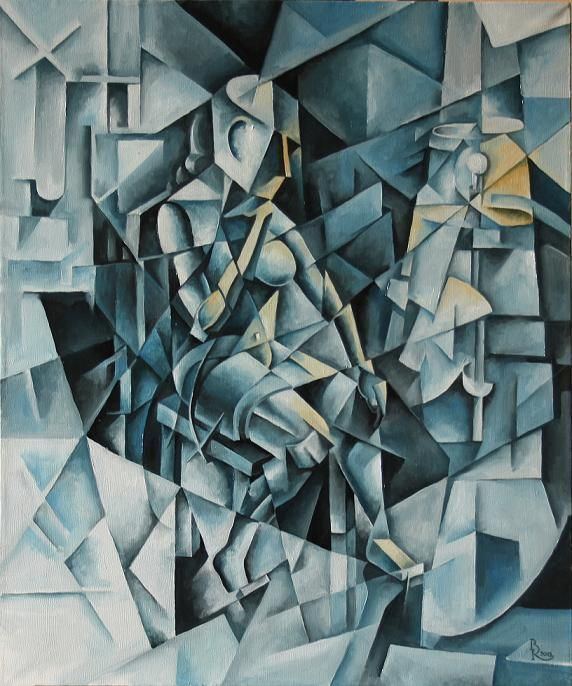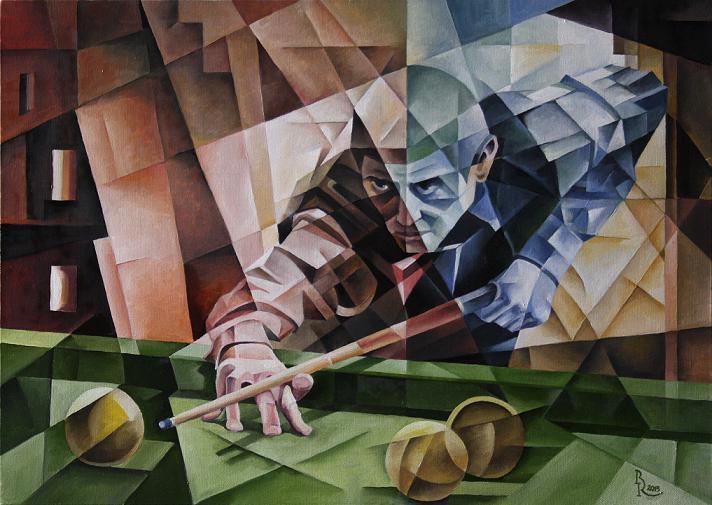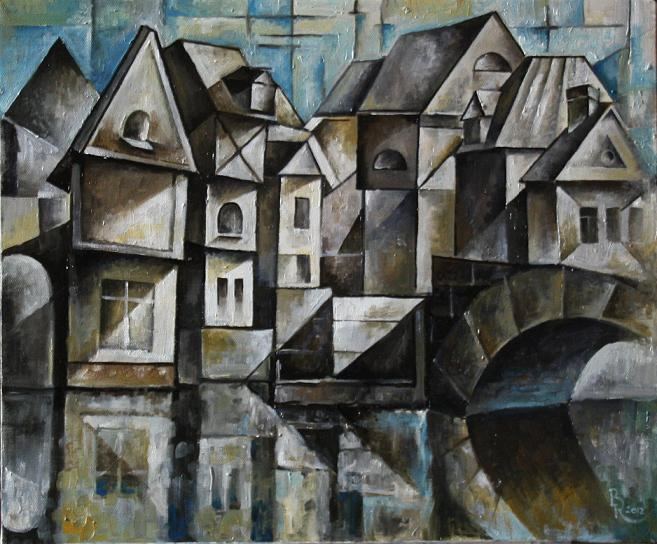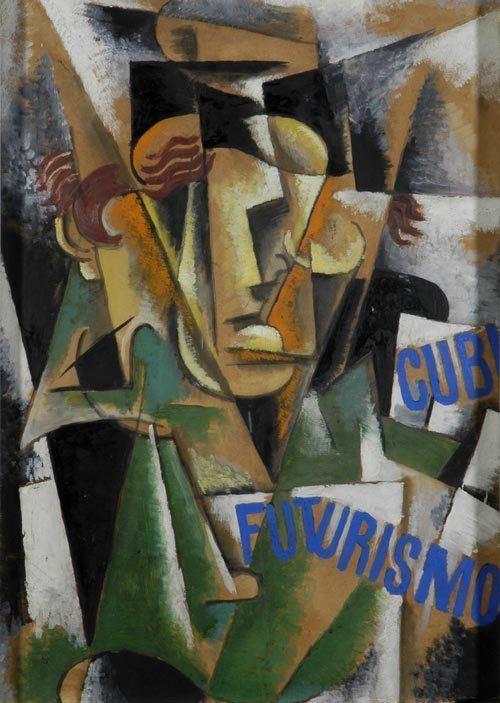 | ||
Cubo futurism jason andrew bodnar
Cubo-Futurism was the main school of painting and sculpture practiced by the Russian Futurists.
When Aristarkh Lentulov returned from Paris in 1913 and exhibited his works in Moscow, the Russian Futurist painters adopted the forms of Cubism and combined them with the Italian Futurists' representation of movement. Kazimir Malevich developed the style, which can be seen in his The Knife Grinder (signed 1912, painted 1913), though he later abandoned it for Suprematism.

The movement's followers included
Cubo-Futurist sculptors included Joseph Chaikov, Boris Korolev and Vera Mukhina, all of whom taught at the Soviet state art school in Moscow, Vkhutemas.





References
Cubo-Futurism Wikipedia(Text) CC BY-SA
